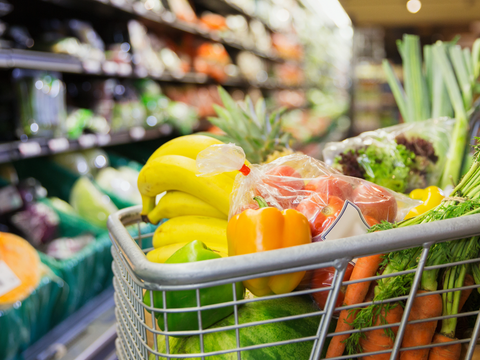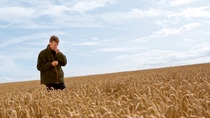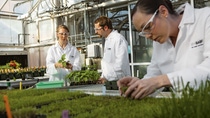Food prices
would be
35-65% higher without agricultural innovation
Growing more using less
to support farmers in doing

Agriculture
Food prices have been climbing faster than overall living costs, putting pressure on households and farmers alike. Ensuring affordable food production depends on a strong, reliable supply that can withstand shocks from extreme weather, increasing pest pressure, trade disruption, and changing regulations. Agricultural innovation strengthens food security by helping farmers boost productivity, resilience, and efficiency. From improved seeds to digital farming tools, new solutions are critical to keeping food both accessible and affordable.
If you filled a grocery cart with household staples - rice, wheat, corn, sugar, oils, meat, and dairy - the total cost of that cart has been climbing faster than the overall cost of living since 20201. Consumers everywhere are feeling the strain on their budget, with food inflation now ranking among the top global worries2. The result: a growing sense of uncertainty3.
While food prices depend on many economic and environmental factors, having a robust and reliable food supply chain is a critical part of keeping food both accessible and affordable. Innovations in agriculture play a role in keeping food flowing, supporting farmers to become more productive and resilient as they carry out the biggest job on Earth.
Food prices are rarely driven by a single factor. In both the United States and Europe, a major driver of a recent surge in retail food prices was the rising cost of global grains like wheat and corn4, costs amplified by extreme weather, trade disruptions, and geopolitical tensions.
Many interconnected forces shape food prices, including:
The agricultural industry cannot control trade policy, geopolitics, or global markets. But it can influence a critical part of the equation: productivity. Agricultural productivity is the cornerstone of food security. From there, prices rise or fall with the wider forces of policy, trade, and climate. But lower food prices should never come at the expense of fair prices for farmers’ production — innovation must support both resilient harvests and viable farm businesses.
Today, these pressures create one of the most unpredictable environments agriculture has faced in decades, marked by tighter farm margins, greater production risks, rising grocery bills, and uncertainty about whether food will remain reliably available and prices within reach.
The pressures driving food prices higher today call for new solutions. And research is already delivering them: seed genetics to better cope with weather extremes, agricultural chemistries to defend against emerging pests, precision agricultural tools, biologicals, and digital platforms that help farmers do more with less.
We need to embrace innovation, and I don't just mean innovation in terms of gene editing and new technologies. Innovation can come in the form of crop practices and management practices, as well as regenerative and other approaches.”
No single technology, company, or region can secure the food supply alone - but by accelerating agricultural innovation and ensuring solutions reach farmers in developing regions as well as advanced markets, increased agricultural productivity supports a robust food supply.
Today’s volatility may feel unprecedented, but agriculture has consistently adapted to disruption. In the 1960s and 70s, farmers adopted high-yield crop varieties and mechanized practices that transformed food production in regions like South Asia and Latin America.
“If we were farming today with 1960s technology, we would require 1 billion additional hectares of land, which is more than a quarter of all the forest on the planet,” notes Jack Bobo.
It is estimated that without these innovations from the now named “Green Revolution” in agriculture that global food and feed prices would be 35–65% higher.5
Food prices
would be
35-65% higher without agricultural innovation
Investing in agricultural innovation is one of the most effective strategies to address food insecurity and drive economic resilience. Every euro allocated delivers outsized returns—strengthening rural economies, stabilizing food markets, and enhancing food affordability.”
The United Nation’s 2025 State of Food Insecurity (SOFI) report puts the role of R&D investment into perspective: “Reducing the probability of future food price inflation events requires sustained investment in agriculture - including research and development, trade routes, and storage - to improve market access, strengthen food system resilience, and enhance productivity sustainably.”
Agricultural innovation cannot eliminate volatility, but it helps secure supply. And when supply is strong, food becomes more affordable. That is where investment in resilient crops, digital farming tools, and sustainable productivity makes a difference: not by controlling markets, but by supporting farmers to feed more people, more reliably.
“Food production has increased faster than population growth,” says Jack Bobo. Although many regions, particularly in the developing world, still face serious barriers that make access and affordability a persistent challenge, there is progress. “What we see as a challenge is actually an indication of things moving in the right direction.”
Published October 5, 2025 by Katie Lelito and Annegret Liebscht (BASF Agricultural Solutions). For media inquiries or to repurpose the story, please contact: Julian Prade




